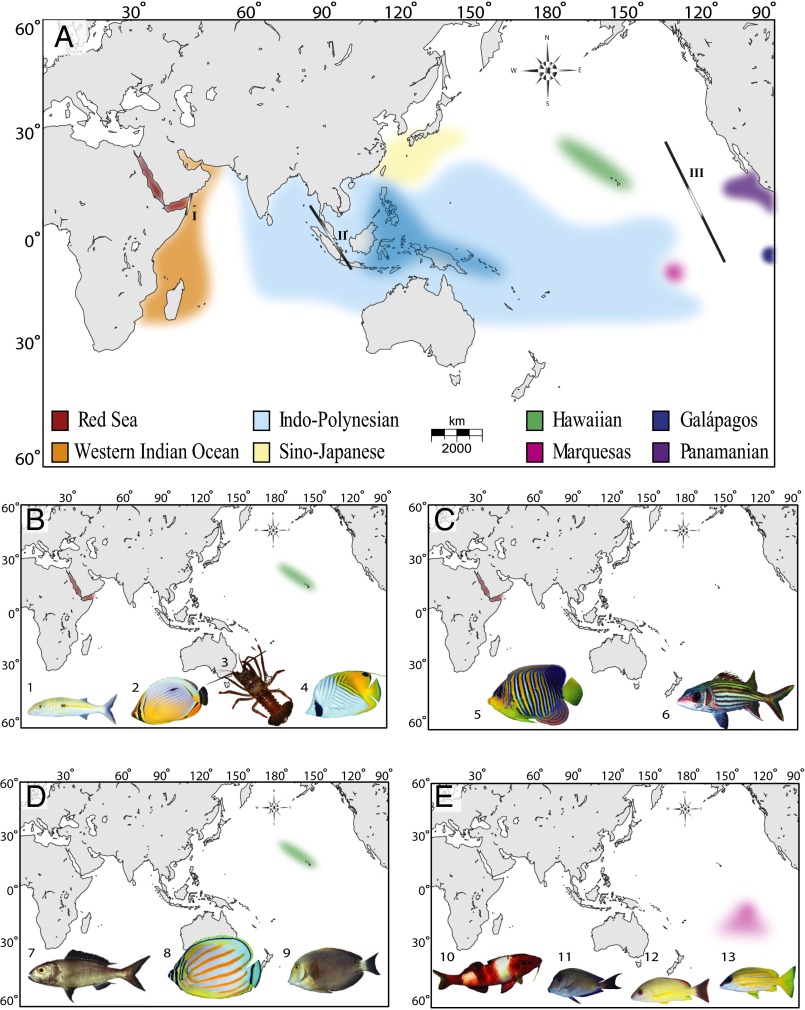Fig. 1.
(A) Biogeographic provinces of the tropical Indo-Pacific as defined by >10% endemism (18). Coral triangle is indicated in dark blue. Primary barriers include (site I) Red Sea Barrier, (site II) Indo-Pacific Barrier, and (site III) East Pacific Barrier. (B–E) Minimaps illustrating widespread species with phylogeographic separation (strong allele-frequency shifts and significant F-statistics) at peripheral provinces. For each panel, the peripheral region(s) of phylogeographic distinction is highlighted in color, and photos are of the species with genetic evidence for that pattern as follows: (B) Hawai’i and the Red Sea [1, Mulloidichthys flavolineatus (19); 2, Corallochaetodon species complex (20); 3, Panulirus penicillatus (21); 4, Chaetodon auriga (22)]; (C) Red Sea only [5, Pygoplites diacanthus (23); 6, Neoniphon sammara (24)]; (D) Hawai’i only [7, Pristipomoides filamentosus (25); 8, Chaetodon ornatissimus (26); 9, Acanthurus nigroris (27)]; (E) Marquesas/French Polynesia [10, Parupeneus multifasciatus (28); 11, Acanthurus nigrofuscus (29); 12, Lutjanus fulvus (30); 13, Lutjanus kasmira (30)]. Photo credits: J. E. Randall/FishBase (photograph 7); Tane Sinclair-Taylor (all other fish photographs); Matthew Iacchei (photograph of Panulirus penicillatus).

